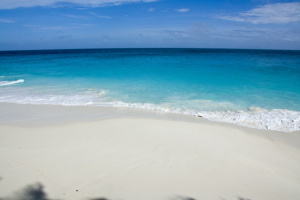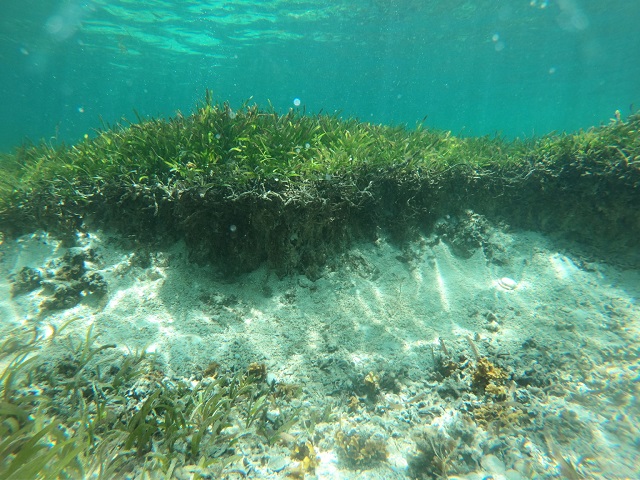World Oceans Day: 5 ways Seychelles is working to protect its underwater life
Seychelles Buzz |Author: Betymie Bonnelame | June 9, 2022, Thursday @ 13:36| 25603 views
(Gerard Larose)
(Seychelles News Agency) - As Seychelles joined the rest of the world to celebrate World Oceans Day on June 8, SNA looks at five ways that Seychelles and local conservation organisations are protecting the island nation's territorial waters and its species.
Seychelles Marine Spatial Plan
The government-led initiative with the support of the Nature Conservancy Trust is working on the first comprehensive large-scale Marine Spatial Plan for Seychelles. Under the plan, in March 2020, Seychelles achieved a milestone when it designated one third of its ocean territory as a Marine Protected Area, a total of 410,000 square kilometres of its Exclusive Economic Zone (EEZ), under the National Parks and Nature Conservancy Act.
There are three zones covered and these will now be fully safeguarded to encourage sustainable development and adapt to the effects of climate change.
With the designation, Seychelles has exceeded its 10 percent protection of its EEZ by 2020 commitment under the United Nations' Sustainable Development Goal (SDG) 14.5.
 |
| (Salifa Karapetyan, Seychelles News Agency) Photo License: CC-BY |
Seychelles Climate Action Plan
In September last year, ahead of the UN conference on climate change, Seychelles pledged to protect 100 percent of its seagrass ecosystem. In the chapter dedicated to the ocean and blue carbon, the island nation stated that it will protect at least 50 percent of its seagrass ecosystems by 2025 and 100 percent by 2030. A long-term monitoring programme for seagrass ecosystems by 2025 will be set up and it includes the greenhouse gas sink of the blue carbon ecosystems within the National Greenhouse Gas Inventory by 2025.
 |
| (Mathew Morgan) Photo License: All Rights Reserved |
Marine Conservation Society Seychelles (MCSS)
Founded in 1997, the non-governmental organisation (NGO) has established a long-term nesting sea turtle monitoring and coral reef programmes. It started with the removal of crown-of-thorns starfish and has now evolved into active restoration using the coral gardening method.
MCSS has been implementing the coral gardening method of coral restoration in the Ste Anne Marine National Park since 2015 and has had 5,800 corals in culture over that period.
Recently MCSS launched an 'Adopt a Beach' programme to assist with the monitoring of the hawksbill turtles during their nesting season.
 |
| (Marine Conservation Society Seychelles) Photo License: All Rights Reserved |
Nature Seychelles
Founded in 1998, the NGO started a ground-breaking coral reef restoration project, now in its eleventh year. It has used coral gardening to grow more than 50 thousand coral fragments in nurseries floating in the sea and transplanted these onto reefs around Cousin Island Special Reserve.
In 2020, Nature Seychelles started a new phase of the project to upscale these milestones, which is supported by a grant from the Adaptation Fund through UNDP and the Government of Seychelles through the Restoring Marine Ecosystem Services by Restoring Coral Reefs to Meet a Changing Climate Future project.
Nature Seychelles is now planning to set up a land-based aquaculture coral farm on the island of Praslin to produce more heat-resilient corals, which are better engineered to adapt to continuously rising ocean temperatures.
 |
| (Nature Seychelles) Photo License: All Rights Reserved |
Save Our Seas Foundation
Set up in 2003 and based in Switzerland, the foundation has centres in the United States, South Africa and Seychelles, where it funds and supports marine research, conservation and education programmes.
The philanthropic organisation, which is committed to protecting the world's oceans, is carrying out long-term research to uncover patterns in coral reef health and disturbance regimes aimed at assessing trends in the health of coral reefs of D'Arros Island and the St Joseph Atoll in the Seychelles archipelago in the western Indian Ocean.
Save Our Seas Foundation is also surveying the different reef fish species occurring at different sites around the islands and monitoring long-term changes in the distribution and abundance of reef fish species as well as classifying species by size class.
It is also working with the Manta Trust for research on manta rays and the data collected by the Save Our Seas Foundation is incorporated into a broader regional understanding of the population and ecology of these threatened animals in Seychelles.
 |
| (Ryan Daly, Save Our Seas Foundation) Photo License: All Rights Reserved |
Back
